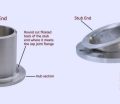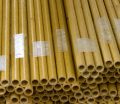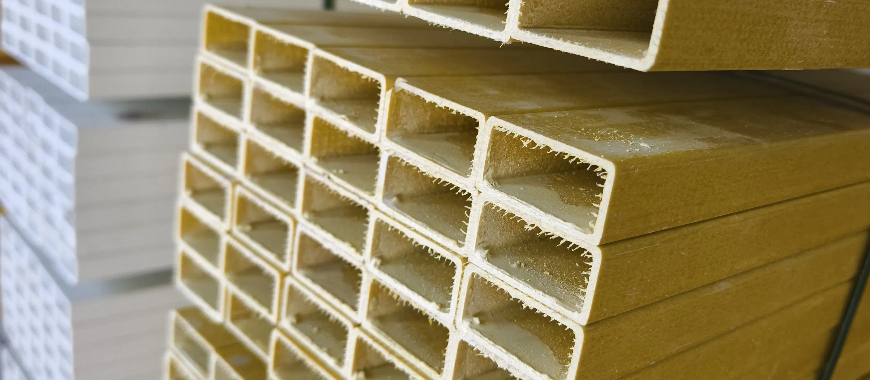
An FRP pipe sleeve is a protective covering made from Fiberglass Reinforced Plastic, designed to shield pipes from damage in various industrial applications. FRP pipe sleeves are widely used in environments where pipes are exposed to harsh conditions, such as gas and water lines. The purpose of an FRP pipe sleeve is to protect pipes from external damage caused by physical stress, corrosion, or environmental factors like temperature fluctuations and moisture. By using FRP pipe sleeves, the lifespan of the piping system is extended, reducing the need for frequent repairs or replacements, and ensuring the smooth operation of critical infrastructure systems. FRP pipe sleeves provide insulation, corrosion protection, and fire safety, ensuring durability and efficiency in harsh pipeline conditions.
What are the Benefits of FRP Pipe Sleeve?
FRP pipe sleeves offer numerous benefits that make them an essential choice for protecting pipelines in a variety of settings. Understanding these benefits is key to selecting the right sleeve for a specific application.
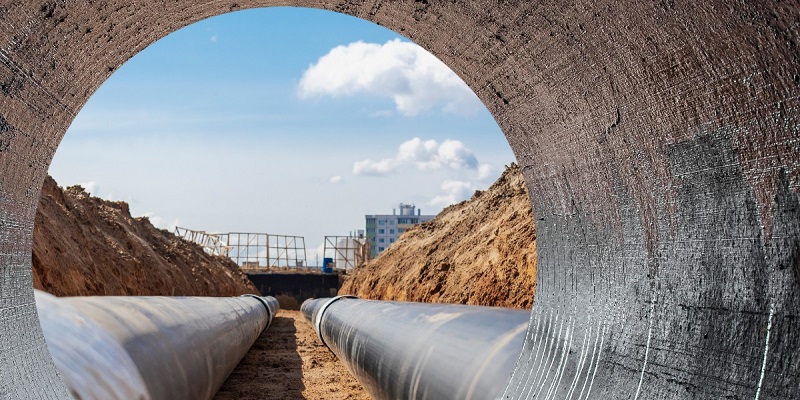
Corrosion Resistance
One of the primary advantages of using an FRP pipe sleeve is its excellent resistance to corrosion. FRP is inherently resistant to many corrosive substances, including acids, alkalis, and salts. This makes it an ideal material for environments where pipes are exposed to harsh chemicals or saline conditions. By encasing the pipe with an FRP mold, it is protected from corrosion-related damage, thereby extending the pipe’s service life and reducing maintenance costs.
High Strength and Durability
FRP pipe sleeves are designed to provide high strength and durability, ensuring they can withstand mechanical stresses, impacts, and other external forces. The glass fibers embedded within the polymer matrix give FRP sleeves their superior strength, allowing them to protect the underlying pipe from mechanical damage such as crushing or abrasion. This is particularly important in areas where pipes are subjected to heavy loads or physical impacts.
Lightweight and Easy Installation
Despite their high strength, FRP pipe sleeves are lightweight, making them easier to handle and install compared to traditional materials like steel or concrete. This characteristic simplifies the installation process, reduces labor costs, and minimizes the time required to protect pipelines. Additionally, the lightweight nature of FRP pipe sleeves does not add significant weight to the pipeline, which is crucial in applications where weight is a concern.
Thermal and UV Resistance
FRP pipe sleeves offer excellent resistance to thermal variations and ultraviolet (UV) radiation. This makes them suitable for outdoor installations and environments where temperature fluctuations are common. The UV resistance prevents degradation of the sleeve when exposed to sunlight, ensuring long-lasting protection for the pipe. This is particularly beneficial in applications such as above-ground piping systems, where exposure to sunlight and extreme temperatures can cause premature wear and tear.
The Role of FRP Pipe Sleeve in Harsh Environments
The ability of FRP pipe sleeve solutions to withstand harsh environmental conditions makes them a preferred choice for industries that operate in extreme environments. Whether it is high-temperature areas, corrosive chemical environments, or locations exposed to mechanical vibrations, FRP pipe sleeves offer the necessary protection to ensure the longevity and reliability of piping systems.
For example, in chemical processing plants where pipes transport highly corrosive substances, the FRP pipe sleeve acts as a shield, protecting the pipe from the damaging effects of these chemicals. Similarly, in high-traffic industrial environments where pipes are exposed to mechanical impact, the use of an FRP pipe sleeve provides the additional strength needed to prevent damage.
Applications of FRP Pipe Sleeve
FRP pipe sleeves are utilized in various applications across multiple industries. Their versatility and protective properties make them an essential component in ensuring the safety and longevity of pipelines.
Underground Piping Systems
In underground piping systems, FRP pipe sleeves play a crucial role in protecting pipes from soil corrosion, moisture ingress, and mechanical damage during installation. When pipes are buried underground, they are exposed to moisture, chemicals, and varying soil conditions that can lead to corrosion and damage. By using an FRP pipe sleeve, the pipe is encased in a corrosion-resistant barrier that prevents these issues, ensuring the pipeline’s structural integrity and functionality over time.
Industrial Fluid Transport
Industrial settings often involve the transportation of corrosive fluids, high temperatures, and abrasive particles. FRP pipe sleeves are commonly used in such environments to protect fiberglass tubes from internal and external corrosion, chemical attack, and mechanical wear. In industries like chemical processing, power generation, and wastewater treatment, FRP pipe sleeves provide a protective layer that helps maintain the safety and efficiency of the fluid transport system.
Marine and Offshore Installations
Marine and offshore environments present unique challenges for piping systems, including exposure to saltwater, extreme weather conditions, and high mechanical stresses. FRP pipe sleeves are used in these environments to protect pipes from the corrosive effects of seawater, UV radiation, and the mechanical impact of waves and currents. They are essential in applications such as seawater intake and outfall systems, offshore oil and gas pipelines, and marine infrastructure, where the durability and corrosion resistance of FRP are critical for long-term performance.
The Key of FRP Pipe Sleeve in Industrial Applications
The use of FRP pipe sleeve in industrial applications is essential for ensuring the long-term performance and durability of piping systems. Pipes in industrial environments are often subjected to extreme conditions, including high temperatures, chemical exposure, and mechanical stress. Without proper protection, these pipes can quickly deteriorate, leading to costly repairs, downtime, and potential safety hazards.
FRP pipe sleeve solutions are designed to withstand these challenges. The fiberglass material used in these sleeves offers excellent resistance to corrosion, impact, and chemical exposure. It ensures that the pipes remain protected even in the most demanding environments. This makes FRP pipe sleeve an ideal choice for industries such as oil and gas, water treatment, chemical processing, and power generation, where the integrity of piping systems is critical for safe and efficient operations.
Guide in the PERMA-PIPE FRP Pipe Operating Manual
The Key of FRP Pipe Sleeve in Piping Systems
The use of an FRP pipe sleeve is a key factor in enhancing the durability and performance of piping systems across various industries. By providing a protective barrier against corrosion, mechanical damage, and environmental factors, FRP pipe sleeves help extend the service life of pipelines and reduce maintenance costs.
Extending Pipe Lifespan
One of the primary functions of an FRP pipe sleeve is to extend the lifespan of the pipeline by protecting it from factors that can cause degradation. In environments where pipes are exposed to corrosive substances, moisture, or mechanical wear, the sleeve acts as a shield that prevents damage and maintains the structural integrity of the pipe. This results in longer-lasting pipelines that require fewer repairs and replacements.
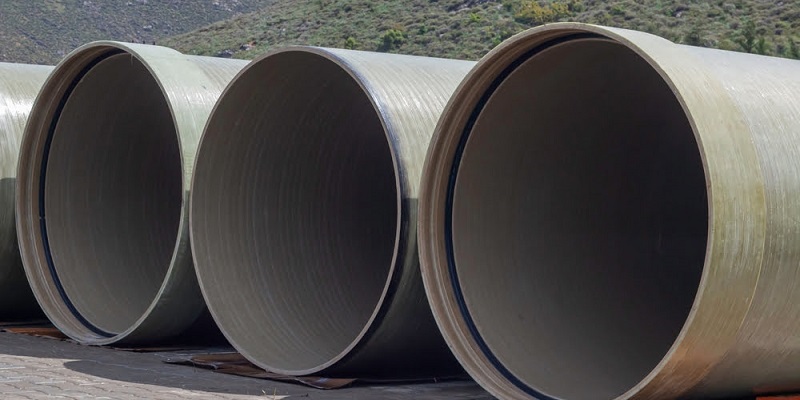
Ensuring Safety and Reliability
The safety and reliability of a piping system are paramount, especially in industries where the failure of a pipeline can lead to catastrophic consequences. FRP pipe sleeves contribute to the safety and reliability of pipelines by providing a robust protective layer that minimizes the risk of leaks, ruptures, and other failures. This is particularly important in applications involving the transport of hazardous chemicals, high-pressure fluids, or critical infrastructure.
Reducing Maintenance and Downtime
By protecting pipes from corrosion and mechanical damage, FRP pipe sleeves help reduce the need for frequent maintenance and repairs. This not only lowers maintenance costs but also minimizes downtime, ensuring that the pipeline operates efficiently with minimal interruptions. In industrial settings, where downtime can result in significant financial losses, the use of FRP pipe sleeves is an effective way to maintain continuous operations.
How to Select the Right FRP Pipe Sleeve
Choosing the appropriate FRP pipe sleeve for a specific application involves considering several factors to ensure optimal performance and protection.
Pipe Diameter and Size
The size of the pipe that needs protection is a crucial factor in selecting the right FRP pipe sleeve. The sleeve must fit the pipe snugly to provide effective protection against external forces and environmental conditions. GangLong Fiberglass offers a range of FRP pipe sleeves in various diameters and sizes to accommodate different piping systems.
Environmental Conditions
The environmental conditions in which the pipeline will operate play a significant role in determining the type of FRP pipe sleeve required. Factors such as exposure to chemicals, UV radiation, temperature fluctuations, and moisture levels must be considered. For environments with high chemical exposure, an FRP sleeve with enhanced chemical resistance properties is essential. In outdoor settings, UV-resistant sleeves ensure long-lasting protection against sunlight degradation.
Mechanical Load Requirements
The mechanical load that the pipeline will encounter should also be considered when selecting an FRP pipe sleeve. In applications where the pipe is subjected to heavy loads, impacts, or abrasion, a sleeve with high mechanical strength is necessary to provide adequate protection. FRP pipe sleeves from GangLong Fiberglass are designed to offer varying levels of mechanical strength, allowing for the selection of a sleeve that meets the specific load requirements of the application.
What are the Testing Standards for FRP Pipe Sleeve?
To ensure the quality and performance of FRP pipe sleeves, they are tested according to established industry standards. These standards provide guidelines for evaluating the sleeves’ properties, including their strength, corrosion resistance, and durability.
- ASTM D2992
ASTM D2992 is a standard test method for determining the long-term hydrostatic strength of fiberglass (FRP) pipe sleeves. This test assesses the sleeve’s ability to withstand internal pressure over an extended period, ensuring that it can maintain its structural integrity under operating conditions. The results provide valuable information about the sleeve’s performance and its suitability for use in specific applications. - ISO 14692
ISO 14692 is an international standard that outlines the qualification and design of GRP (glass-reinforced plastic) piping systems. This standard includes testing procedures for evaluating the mechanical properties, chemical resistance, and durability of FRP pipe sleeves. Compliance with ISO 14692 ensures that the sleeves meet the required quality and performance criteria for use in industrial and offshore applications. - ASTM D2563
ASTM D2563 provides guidelines for the visual inspection of FRP laminates used in pipe sleeves. This standard specifies the acceptable levels of defects, such as voids, cracks, and delaminations, ensuring that the sleeve is free from imperfections that could compromise its performance.
How about Optimizing FRP Pipe Sleeve for Performance
Selecting the right FRP pipe sleeve for a specific application is critical for optimizing the performance of the piping system. Factors such as the operating environment, the type of fluids being transported, and the external conditions must all be considered when choosing an FRP pipe sleeve. For example, pipes that are exposed to high temperatures or corrosive chemicals may require sleeves with enhanced resistance to these elements.
By working with manufacturers like GangLong Fiberglass, industries can ensure that they are selecting the right FRP pipe sleeve for their needs. Custom solutions that are tailored to the specific requirements of the installation will offer the best protection, extending the life of the pipes and improving overall system performance.
The use of FRP pipe sleeves is an essential strategy for protecting industrial and commercial piping systems from the many challenges they face. By investing in high-quality FRP pipe sleeves, industries can ensure that their pipes remain functional, reliable, and protected for years to come.
Long-Term Benefits of FRP Pipe Sleeve Solutions
The use of FRP pipe sleeve solutions offers numerous long-term benefits for industrial and commercial installations. One of the primary advantages is the extended lifespan of the piping system. By protecting pipes from environmental factors such as corrosion, mechanical stress, and chemical exposure, the use of FRP pipe sleeves ensures that pipes can continue to function efficiently for decades without requiring significant maintenance.In addition to extending the life of the piping system, FRP pipe sleeves also reduce the overall cost of ownership. With fewer repairs and replacements needed over the life of the system, operators can save on maintenance costs while avoiding the downtime associated with pipe failure and FRP pipe failure modes. Furthermore, the ease of installation and the lightweight nature of FRP pipe sleeves make them a cost-effective solution compared to traditional pipe protection methods.
PPR FRP Pipe: Advanced Solution for Industrial Water Supply
Installation of FRP Pipe Sleeve
Proper installation of FRP pipe sleeves is essential to ensure they provide the intended protection and extend the service life of the pipeline. The installation process involves several steps:
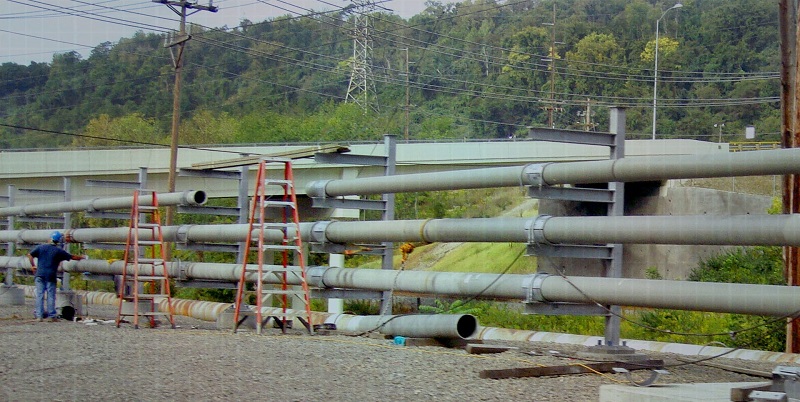
Surface Preparation
Before installing the FRP pipe sleeve, the surface of the pipe must be thoroughly cleaned to remove dirt, oil, rust, and any other contaminants. This ensures that the sleeve adheres properly to the pipe and provides an effective barrier against environmental factors.
Sleeve Application
The FRP pipe sleeve is typically applied by sliding it over the pipe or wrapping it around the pipe, depending on the design of the sleeve. The sleeve should fit snugly around the pipe to ensure complete coverage and protection. In some cases, adhesives or sealants may be used to secure the sleeve in place and create a watertight seal.
Curing and Inspection
After installation, the FRP pipe sleeve may require a curing period to ensure it bonds properly to the pipe and achieves its full strength. Once the curing process is complete, the sleeve should be inspected to verify that it has been installed correctly and provides the desired protection. This inspection ensures that there are no gaps, voids, or defects in the sleeve that could compromise its performance.
Custom FRP Pipe Sleeve Solutions
Many manufacturers, such as GangLong Fiberglass, offer custom FRP pipe sleeve solutions that are designed to meet the specific needs of different industries. These custom sleeves can be tailored to fit pipes of various diameters and lengths, ensuring that they provide the perfect level of protection for the application. Custom FRP pipe sleeves may also include additional features such as increased resistance to UV rays, enhanced fire resistance, or the ability to withstand higher pressure levels.
Industries that require specialized protection for their pipes, such as the oil and gas sector, can benefit from these customized solutions, as they ensure that the pipes remain protected under the most challenging conditions. Custom FRP pipe sleeves are an investment in the longevity and performance of critical infrastructure, offering peace of mind for operators and engineers alike.
FRP Pipe Sleeve: Essential Protection for Piping Systems
An FRP pipe sleeve (Fiberglass Reinforced Plastic) is a highly effective protective solution used in various industries to shield pipes from external damage, corrosion, and environmental stress. These sleeves are designed to fit around pipes, creating a barrier between the pipe and its surroundings, ensuring the longevity and durability of the piping system. FRP pipe sleeves are commonly used in gas and water lines, as well as in chemical processing plants and industrial facilities. Their primary function is to protect pipes from physical damage and harsh environmental conditions, preventing issues like leaks, corrosion, and mechanical wear. By employing an FRP pipe sleeve, industries can maintain the integrity of their infrastructure, reduce maintenance costs, and enhance the overall performance of their systems.
What is a GRP Riser Sleeve?
A GRP riser sleeve, made from Glass Reinforced Plastic (GRP), is specifically designed to protect vertical sections of piping, known as risers. These risers are often exposed to both internal and external stressors, including pressure fluctuations, mechanical forces, and corrosive elements. The GRP riser sleeve provides essential protection by reinforcing the riser’s structure, ensuring that it can handle these challenges without compromising its integrity.
In many industries, risers play a crucial role in transporting fluids or gases between different levels of a facility. As such, they are subjected to unique pressures, particularly at the junction points where they transition between horizontal and vertical orientations. The use of a GRP riser sleeve helps to distribute these pressures evenly, reducing the risk of damage and ensuring that the riser can continue to function effectively over time. In industries such as oil and gas, where risers are exposed to harsh marine environments, the corrosion-resistant properties of GRP riser sleeve solutions are particularly valuable.
Gas Pipe Sleeves and Their Importance
A gas pipe sleeve is a specific type of protective sleeve used to shield gas pipes from environmental factors and mechanical damage. In gas distribution networks, pipes are often buried underground or installed in walls and ceilings, where they can be exposed to soil, moisture, and temperature fluctuations. These factors can lead to corrosion, leaks, and other issues that compromise the safety and efficiency of the gas system.
The FRP pipe sleeve used for gas pipes ensures that the pipes remain insulated and protected from these external conditions. By encasing the gas pipe within a sleeve, the system is safeguarded against potential damage, reducing the risk of leaks and ensuring a steady, reliable gas supply. Gas pipe sleeves are crucial in residential, commercial, and industrial installations, helping to prevent costly repairs and maintaining the safety of the infrastructure.
External Gas Pipe Cover Solutions
External gas pipe cover solutions are designed to protect gas pipes that are exposed to outdoor elements. Pipes installed outside buildings or underground are vulnerable to environmental factors such as rain, soil movement, and temperature changes, which can accelerate wear and tear. An FRP pipe sleeve offers a durable, weather-resistant solution for safeguarding these pipes, ensuring they remain operational for years without requiring frequent maintenance.
These external covers are typically made from materials like FRP that offer high resistance to corrosion, UV rays, and mechanical stress. They are custom-fitted to the specific pipe dimensions, providing a snug, secure layer of protection. Whether the pipes are used for gas distribution, water transport, or other purposes, the use of external FRP pipe sleeve solutions ensures that they are shielded from the elements, preserving their structural integrity over time.
Internal Gas Pipe Cover Protection
Internal gas pipe cover protection is essential for safeguarding pipes that are installed within buildings, walls, or underground systems. Pipes located in these environments are often subject to pressure from surrounding structures, moisture, or temperature fluctuations, which can cause damage over time. By using an FRP pipe sleeve, the internal gas pipes are insulated from these forces, ensuring that they remain functional and secure.
FRP pipe sleeves used for internal gas pipe protection are typically lightweight yet highly durable, providing a barrier against corrosion, thermal expansion, and physical impact. This protection ensures that the pipes can maintain their efficiency, reducing the likelihood of leaks or structural failure. The installation of an FRP pipe sleeve for internal pipes is a cost-effective way to extend the life of the system while minimizing the need for repairs or replacements.
Pre insulated FRP pipe: Energy Efficiency for Heating Systems
Accessories Compatible with FRP Pipe Sleeve for Enhanced Performance
To optimize the functionality of FRP pipe sleeves, various reinforced fittings and accessories can be integrated into the piping system. These include:
- FRP Flanges
Designed for connecting pipeline sections, FRP flanges are lightweight, corrosion-resistant, and easy to install. They ensure leak-free connections and are ideal for environments where chemical exposure is high. - FRP Elbows
These fittings allow directional changes in the pipeline, maintaining the same strength and corrosion resistance as FRP pipe sleeves. They are crucial for applications with complex layouts or tight spaces. - FRP Couplings
Couplings join two pipeline sections securely. Made of fiberglass-reinforced material, they offer high durability and excellent sealing, enhancing the structural integrity of the system. - FRP Reducers
Used to connect pipes of different diameters, these fittings maintain consistent performance while adapting to system requirements, ensuring flow efficiency. - FRP Tees and Crosses
These fittings enable branch connections, distributing flow in multiple directions. Their reinforced design complements the protective properties of FRP pipe sleeves, preventing wear at junction points.
By using these accessories alongside FRP pipe sleeves, systems can achieve superior protection, extended service life, and adaptability to demanding environments.
FAQs about Frp Pipe Sleeve
A pipe should be sleeved in several situations where additional protection is necessary. This includes when the pipe passes through walls, floors, or concrete, where it might otherwise be subject to abrasion or pressure. Sleeving is also recommended in environments with harsh chemicals or extreme temperatures, where the sleeve can provide an extra layer of protection. Additionally, when pipes are installed underground or in areas where movement or vibrations are expected, sleeving helps prevent wear and damage. In cases where insulation is required to maintain temperature control, sleeves are often used to add thermal protection, ensuring the pipe remains functional in extreme conditions.
Yes, plastic pipes often need to be sleeved, particularly when they are installed in environments where they might be exposed to physical damage, chemical exposure, or excessive movement. Sleeving a plastic pipe can protect it from external factors that could weaken or damage it over time. For example, if plastic pipes pass through walls, floors, or concrete, they should be sleeved to prevent abrasion and ensure proper insulation. Sleeving also helps prevent the pipe from moving within the surrounding structure, reducing the risk of leaks or damage caused by expansion and contraction. In certain industrial applications, sleeving plastic pipes is essential for maintaining long-term performance.
Pipe sleeves are protective coverings used to safeguard pipes from damage or to provide additional insulation. They serve several important purposes, such as protecting pipes from corrosion, physical damage, and abrasion. In some cases, pipe sleeves are used to create a barrier between the pipe and the surrounding material, reducing the risk of movement, vibrations, or exposure to harmful substances. Additionally, pipe sleeves can provide thermal insulation, helping to regulate the temperature of the fluid inside the pipe. They are commonly used in applications where pipes pass through walls, floors, or ceilings, ensuring that the pipe remains protected while maintaining structural integrity.
For FRP pipe sleeves, key requirements include durability, high resistance to corrosion and temperature, lightweight construction, and easy installation. They should provide effective thermal insulation to minimize heat loss and meet fire protection standards, especially in industrial or vehicle applications. Compatibility with the pipeline material is crucial to prevent chemical reactions or degradation. Additionally, FRP pipe sleeves must withstand mechanical stresses and external impacts while maintaining structural integrity in harsh conditions. Proper sizing is essential to ensure a snug fit and optimal performance.
FRP pipe sleeves are primarily used for protection, insulation, and fire safety around a single pipe, focusing on improving performance in specific environments. Casings, often larger and more robust, are designed to encase pipes for structural support or additional layers of protection in extreme conditions. While sleeves enhance efficiency, casings provide comprehensive shielding.
Wrapping pipes with FRP pipe sleeves is recommended when they are exposed to high temperatures, corrosive environments, or mechanical damage. For pipelines near heat sources or self-heating systems, FRP sleeves ensure thermal insulation and fire protection. Similarly, wrapping is essential in industrial settings, where pipes require added durability and energy efficiency. Early application can prevent long-term damage and improve the lifespan of the piping system.
In the context of FRP pipe sleeves, PPF refers to “Protective Pipe Fitting,” emphasizing the integration of sleeves for enhanced insulation, corrosion resistance, and safety. PPF ensures that the pipeline components, including fittings, remain secure, efficient, and durable in challenging environments.

As the editor of GangLong Fiberglass, I have years of experience and in-depth research, focusing on cable tray products, fiberglass solutions, and grille systems. I incorporate years of industry insights and practical experience into every content, committed to promoting the progress of the industry. At GangLong Fiberglass, my commitment is reflected in every product, from innovative cable trays to durable fiberglass solutions and sturdy grille systems. As an authoritative voice in the industry, my goal is to provide valuable information to professionals and businesses and promote forward-looking solutions.

